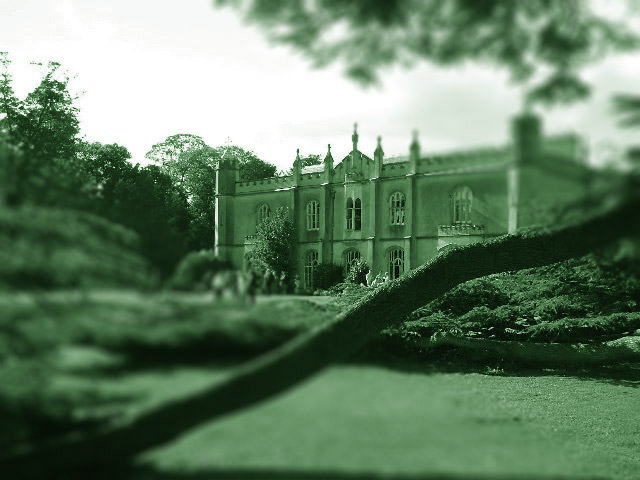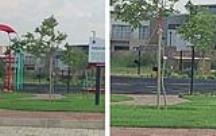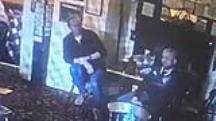I've spent many a morning leaving this strangely sleeping village for London, and I wish I’d known the last time I left that I was never to come back again. I would have probably looked back to see it one last time, to smell the fresh, flavourful air, to take in the sight of its splendid moors, and perhaps to look for an inkling of a spectre of some sort. For although I searched and felt the energy of souls around me, I never saw one here as I have elsewhere. Yet, I felt them.
When I first set foot in the village, I knew nothing of its hauntings and visitations. Its beauty struck me, and I instantly wished I had spent my childhood there, in one of those Georgian, half-timbered houses, but few children have ever had the privilege. I walked past the Roald Dahl’s Museum, and was instantly taken aback by the sight of the writer’s former home. I had no idea he’d lived there. I understood in time why he would have wanted this village to serve as his muse.
The Spook’s Greeting
The rest is all a blur until my first night spent in Great Missenden. It is then that it all started, and it gradually became more intense. Something terribly strange was happening around me. At midnight, my computer would shut down of its own accord. The lights would flicker. After my husband fell asleep, I would hear the sound of a clock coming from the hallway, entering our bedroom, going past our bed, and then returning to the hallway. Something was going back and forth like this several times. For some reason, I was under the impression that, had this entity been alive, it would have been a manly figure, with a long, dark cloak; possibly a priest. The tick-tock sound, though, was beyond me. Why would a priest carry a clock around at night? All this was going on as the bedroom door was closed. I told my husband, but he thought nothing of it and said I should stop worrying.
I couldn't sleep after a while. Then the strangest thing happened. One night, as I lay in bed facing the wall, with my husband beside me, something grabbed hold of my left hand seemingly through the wall, and shook me vigorously with a thundering roar. My husband woke up. He had felt and seen everything, but neither of us could explain it. I was scared out of my wits and speechless. The room was in the attic, yet nothing could have fallen from the roof onto that side of the wall. There was simply no reasonable explanation for it.
I then decided to look into the history of the village and of the building I was in. What I found sent shivers down my spine, yet I couldn't resist looking deeper and deeper into these reports, until I finally reached a dead end. But what I could find I would like to share with you.
A Dark Past
The Great and Little Missenden Abbeys
The abbey of Great Missenden was founded by William de Missenden, lord of the manor, in 1133. An Augustinian monastery was erected the same year to serve Benedictine Monks, but the Order was dissolved in the 16th century. A fire ensued and nearly destroyed the Gothic country house built by the Carrington family on the site, which came to be known as the Great Missenden Abbey. Luckily, it was restored in the ‘80s and now serves as college and convention centre. The property changed hands countless times before it was bought in 1946 by the Buckinghamshire County Council. In 1550, the abbey and the manor had been given by Edward VI to Princess Elizabeth. The last lord of the manor, William Fleetwood, inherited the abbey and its grounds at the age of 4. The manor’s crest features a crozier, a pastoral staff with a cross and a coiled head.
A stone’s throw away from the Great Missenden Abbey lies the Little Missenden Abbey. This abbey is a newer construction, one that served as hotel, nursery, and eventually hospital. The story goes that the building was re-purposed because of the haunting. Tunnels are said to exist between the two buildings, and monks were reportedly using these tunnels just before their abbey was dissolved. I have seen the impressive Little Missenden Abbey fireplace, beside which monks reportedly had their tunnel entrances, with my own eyes, only three years ago. I must confess that the doors were flush with the black, decorative wooden panels that surrounded the monumental fireplace, but they were hardly discreet. Yes, I could picture monks sneaking through there with a candle and a pair of trousers any day.
The Arrouasian canons that served the Little Missenden abbey were similar to Augustinian priests. The abbey of Missenden was inspected by bishops, who were dissatisfied with the discipline, the budgeting and the state of the buildings.
A canon was forced in 1521 to do penance for seemingly having fallen prey to heresy. Another seems to have cut his throat for fear of being punished in 1297, but whether or not he was successful in killing himself is unknown. Bishop Longland revealed in 1530 that a canon, John Slythurst, had been guilty of the greatest crime condemned by the Scriptures, as had been William Honor, a former abbot, who died in 1528. Oddly, he had only served as abbot for 7 years, and the cause of death is unknown. John Slythurst was no longer allowed to see his fellow canons, or any boys, for that matter, and was confined to his room. He was eventually allowed to practice again. Roger Palmer, the refractor, was seen several times coming out of a village house at midnight wearing only his ‘doublet and jerkin’, sword close at hand. After being punished, he carried on with his work and never married.
The canons, the abbots and the bishops were obviously not pleased that these strange goings-on had not only been revealed, but written down in official reports for posterity, vague as they are. What’s more, the abbey servants were outwardly appalled with the behaviour and refused to serve the canons. The canons, in turn, made official complaints against their abbots, which more often than not placed the blame on the priests. It was a very troubled time for all those involved.
There have been reports of a lady in dark Victorian crinoline appearing at the abbey, by the cloakroom, and there are some who believe she may have committed suicide. Others report seeing a ‘Black Monk’ roaming the abbey, wondering about, particularly around the staircase.
The Grounds of the Abbey
While the abbey may have had its rotten apples, the villagers at the time had their own quirks. It seems it became fashionable for noblemen to be buried upright on their horses. Sir John du Plessis, Earl of Warwick, and his son, Hugh de Plesseter, were reportedly both buried this way 30 years apart, in the 13th century. Unsurprisingly, the monks were against it, but had no choice. Both horsemen are now reportedly spotted riding their steeds on stormy nights.
Perhaps the trend carried on until the 19th century; it’s not clear. Apparently, Captain Backhouse was buried standing, sword in hand, in his back garden, but villagers complained that his ghostly figure was scaring them senseless, so his body was exhumed and buried at the abbey.
More recently, the Somerset supermarket reportedly has video footage of a ghostly presence, but the footage has not been released. It’s not unusual for ghost hunters to drop by and ask the owner for a glimpse, but he invariably refuses to show his recording for fear that he might give away the location of his cameras. Hopefully, a persuasive client will one day break the ice.
I’m afraid that’s all I've managed to put together for you, but if I've sparked your interest, perhaps you’ll make a note to visit Great Missenden one day, and explore these peculiar goings-on. If you’re not too easily unnerved, I recommend an attic room at the local hospital.







